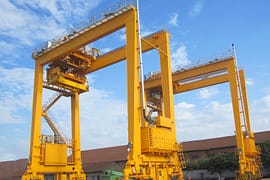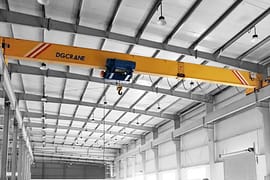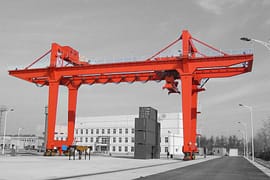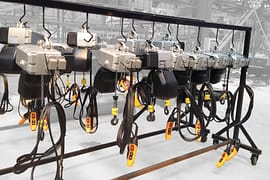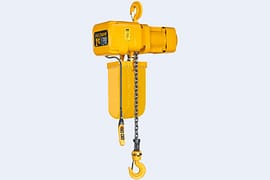A Qualified Overhead Crane Operator Requires Both Technical Knowledge And Experience
WHAT QUALIFIES A CRANE OPERATOR
When you hear the term overhead crane operator, you might think of workers who maneuver large construction cranes, tower cranes, marine cranes, and the like. But, the term ¡°overhead crane operator¡± actually refers to workers controlling any type of crane, including overhead cranes.
Operating any type of crane can be a dangerous job, especially without effective training. Hands-on experience is a critical part of becoming a qualified overhead crane operator. But, according to OSHA, safe crane operating requires both technical knowledge and experience. Many operators have years of experience controlling cranes on the job. They might know what they¡¯re doing, but do they know why?
Safe crane operating not only requires workers to know how to operate the system; it also requires them to know why. According to OSHA, a qualified overhead crane operator knows how to operate the system, and has also demonstrated proficient technical knowledge and safe operational skills. While most overhead crane operators have never received formal training, many employers are starting to require workers to complete safe crane operator certification programs. Although OSHA has established its own definition of a competent crane operator, there isn¡¯t one card that assures you know how to operate every crane.
For employers who are trying to integrate a safe crane-operating program into their training regimen, there are two basic questions to consider. Does the training cover general crane knowledge subject matter? And, is it specific to a particular crane and model While it's important to consider the specific type of crane your workers will be using, it's also important to remember that a good program requires workers to be trained in a technical way that is relevant to all systems.
Even so, most crane operator certification programs focus general crane knowledge and operational skill by crane type, and exams are based on subject matter that is relevant to all cranes of that type, not a specific make or model. For example, an overhead crane certification program will focus on general crane knowledge and operational skill for all types of overhead cranes, not just for gantry cranes, bridge cranes or jib cranes. This can create some on-the-job confusion for trainees, but OSHA offers this piece of advice: understand that your charts might look different, but you have to look at your size/type of crane and figure out how to apply it to the concepts outlined in your certification program.
Aside from certification programs, there is another important component that employers need to consider when evaluating their crane operator safety regulations. What is crane operation? OSHA defines it as controlling the swing of the hook, and nothing more. It's really that simple. A qualified overhead crane operator only needs to know how to do one thing, operate the crane. Many employers expect their workers to know how to assemble and disassemble the crane, how to inspect the crane, and how to maintain the crane. All of these things are an important part of crane safety, but it's imperative to know the distinction. A crane inspector should receive training that is entirely different from a crane operator. One person can learn to both, but receiving overhead crane operator training does not qualify you to inspect, maintain, or even assemble/install a system.
WHAT QUALIFIES A CRANE INSPECTOR?
Hiring a competent person to inspect your crane is essential to the safety of your workers and the longevity of your system. OSHA defines a competent crane inspector as: someone who is capable of identifying existing and predictable hazards in the surrounding or working conditions which are unsanitary, hazardous, or dangerous to employees, and who has authorization to take prompt corrective measures to eliminate them. According to the American National Standards Institute (ANSI), a qualified crane inspector should receive formal training in the areas of: safety and design codes related to cranes; federal, state, and local codes and regulations; safe operating practices of cranes; report writing and documentation; and communication skills. Furthermore, an inspector should receive additional formal training every two years.
Unfortunately, many workers make the mistake of assuming that their crane operator is also qualified to inspect their cranes. This could be a deadly mistake. What qualifies a crane operator is something completely different from what qualifies a crane inspector. Be sure that each person who is tasked with any one of these jobs is qualified in that respective competency. Furthermore, it's important to know the standards enforced by state and federal law, and which states enforce an OSHA-approved state plan for your industry. It is the responsibility of the Owner/User to install, inspect, test, maintain, and operate a crane or associated lifting equipment in accordance with applicable ANSI Safety Standards, OSHA Regulations, and local regulations and laws.
SAFETY STANDARDS AND REGULATIONS
Currently, in 21 states, occupational safety and health standards are enforced by the state agency responsible for the OSHA-approved state plan. Many states limit the scope of their participation to state and local government employees, but some include all workers. If you are operating a small business in one of those states, you must determine whether requirements in addition to those in the OSHA standard apply. For example, the OSHA standard for Cranes and Derricks in Construction requires that overhead? Crane operators be qualified or certified by November 10, 2014, but states may require such qualification or certification by an earlier date. In addition, state or local licensing requirements may apply.
For more information about OSHA standards and compliance, visit the OSHA website. If you are seeking advice about complying with OSHA standards, OSHA does offer an On-Site Consultation Program. This program will ensure that your workplace is OSHA compliant and that workers are safe on a daily basis. The program offers free and confidential advice to small and medium-sized businesses in all states, with priority given to high-hazard worksites. These services are separate from enforcement, which means they do not result in penalties or citations. Instead, consultants from state agencies and universities work with employers to identify workplace hazards, provide advice on compliance with OSHA standards, and help establish safety and health management systems.
To find an OSHA On-site Consultation Program Office near you, go to their consultation directory:
And, remember, worker safety is the responsibility of the employer and includes every aspect of the workplace. Make sure you're following state standards and taking the necessary steps to ensure the safety of your employees. In addition, overhead crane operators and other workers who work with or near cranes should also take preemptive steps to ensure their own safety and the safety of those around them. Being a proactive employee means becoming aware of the crane hazards in your workplace and knowing what steps you can take to correct them.









